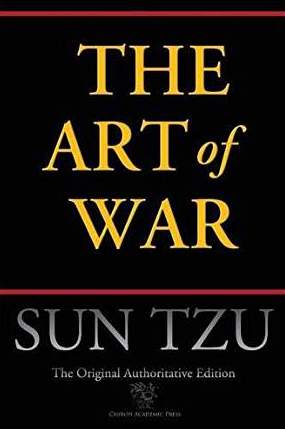Lessons from "The Art of War" for Project Management Success
Introduction to Five Success Factors

The Art of War is one of the most ancient books on strategy and one of the most famous books of all times. On the surface, it is about how to win a war but a lot of what is said is applicable to project mangement.
In part one of this short series we will examine the five basic measures you should monitor for (project) success.
“This is war.
It is the most important skill in the nation.
It is the basis of life and death.
It is the philosophy of survival or destruction.
You must know it well.”
The Art of War was written by Chinese general Sun Tzu around the fifth century B.C. In Sun Tzu’s world, war was brutal, costly, painful and therefore only to be taken on when it was absolutely necessary. And when it was necessary, the only way to set yourself up for success was to become a student of the thing you were about to spend people’s lives on.
For those, who manage IT projects, this may seem a bit over the top if you try to apply it to your work, but when you come right down to it, it isn’t that far off. Each project we take on levies a heavy toll on us and the places we work. We burn money, people, reputations, good will and more often than not, our life outside of work.
We’ve all worked with the people who create projects just to seem busy, or create giant catastrophes just to save the day. More often than not, these people get sorted in the end.
The thing to keep in mind for each of us is, if you are going to take on a project, and burn through all those things that could be used on something else the company needs to stay afloat, or the time you need outside of work to be with your family, make sure you understand why you are doing it. Make sure you know what you are going to do, how you are going to succeed, and most of all, what you are going to do when you realize you got the first three questions wrong.
The five measures or how to prepare for project success
In the Art of War, as soon as Sun Tzu finishes explaining how serious the topic of war actually is, and how much careful examination it requires, he begins explaining how to go about studying it.
2,500 years ago Sun Tzu came up with a list of five things he said had to be considered first and foremost when one was going to engage in conflict. He referred to these as The Five Measures:
- Tao
- Climate
- Ground
- Leadership
- Method
A great explanation of how these five measures work is Gary Gagliardi‘s and it can be found in this book. Gagliardi’s explanation is a bit focused on sales and business, so for people managing projects, a good way to think of these five measures is:
Tao – The philosophy that guides your opponent
Climate – The political environment you are dealing with
Ground – The organizational structure you are dealing with
Leadership – The leader’s character and decision making skill
Method – The efficiency and effectiveness of the applied Tao
Sun Tzu says that if you study these five measures, you have to look at them as they relate to not only your opponent, but also yourself, and that if you are able to do that, you will be able to use them in order to achieve success.
He continues in saying that if you do not know these five measures, you cannot plan for success or prepare to achieve it.
How the measures apply to project management
In hopes of making it a little easier to apply, here are some examples of the kinds of things you might consider when applying the five measures to your own situation. I’ve paired them up and listed them out of order because I think it makes them easier to understand.
Ground – What is the org. structure? Who is supposed to report to whom?
Climate – What is the political power structure? Despite the org charts, who really has the power to influence and make things happen – perhaps most importantly, who has the power and motivation to pose a threat to the work you are doing?
Leadership – What is the leadership style of the organization/people you are dealing with. For instance, some leaders are very command and control (“You can be in the boat or off the boat”); others are more concerned with a shared or diplomatic solution.
Discipline – How strictly does the organization follow its own defined process. For example, there are lots of PMOs out there with very clearly defined processes that are not supposed to be deviated from… and yet often times, people spend more time working around the regulations than they do following it or adapting it.
Tao – This one is not always an easy thing to grasp for those who are not used to it. In the context of what we are talking about here, the Tao would refer to the nature/character/vibe of the place. Some organizations place a high value on creativity and freedom for responsible, engaged teams. Others are more about people working 9-5, following a process without much thought or personal involvement in why things are done the way they are, or finding ways to make them more efficient.
Conclusion
If you take the time to understand these ancient concepts and learn what they mean to the places you are working, it will better enable you to make the necessary decisions about how to approach your work.
In the next post of this series we will explore in more depth how the five measures can be used to manage your projects more successfully.

